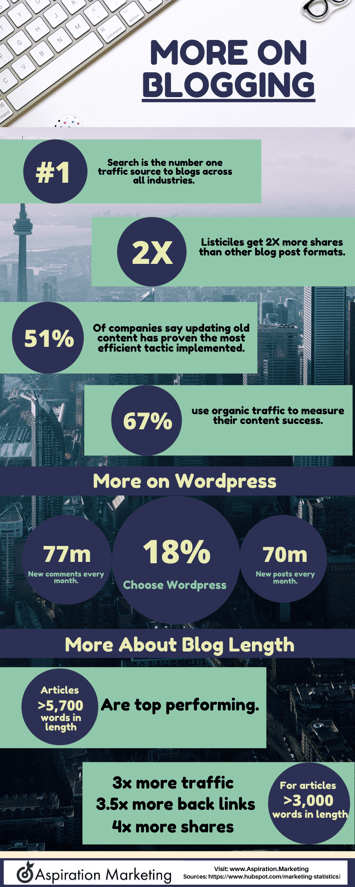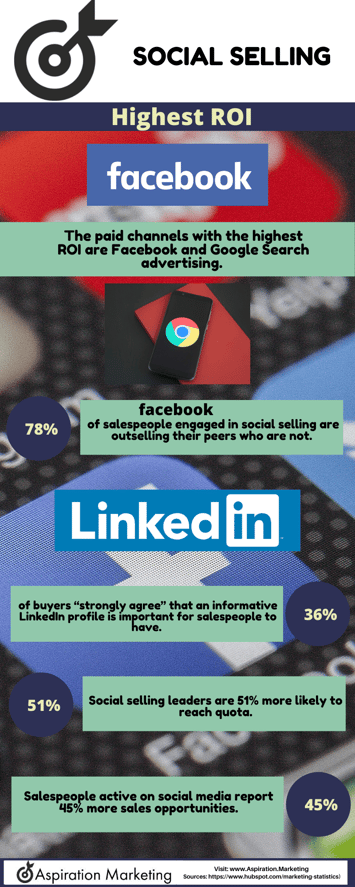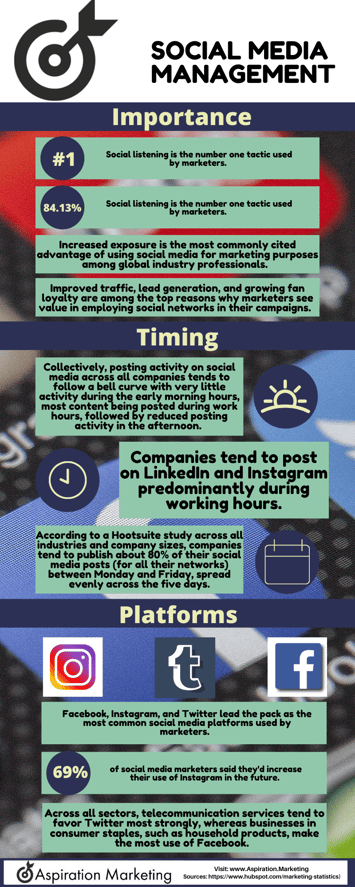Infographics: The Forgotten Content Marketing Powerhouse
There's no shortage of data, metrics, and useful business insights that can be found all across the internet, through work-related interactions, and generated by your business activities. The sheer volume of data is staggering, and businesses are trying to find ways to ingest and use all the information coming their way.

One easy way is by using infographics. They use text and visual content to present ideas innovatively, making them easy to synthesize. By crafting an eye-catching piece of visual data, your content can be easily consumed and help raise awareness while improving how your business communicates with your audience. That, in turn, will generate traffic and links to your website.
Why Infographics Matter
Before we dive into how to make them work for you, let's look at why we need infographics in the first place. We live in an age where technology allows us to generate content exponentially. Over 1.5 billion pieces of content are generated daily, including 140 million tweets and 2 million videos. That translates to the equivalent of an average person reading 174 newspapers worth of information every single day. All this can make an individual feel overwhelmed and bombarded with more information than they can process.
Hence, the infographic is the pivot to a more visual style of information transfer. By converting data into graphs, charts, maps, or visual stories, you're condensing the information into an easily processed medium, that bodes well for your business and your knowledge base.
The results speak for themselves:
-
Between 2010 and 2012, search volumes of infographics increased by over 800%.
-
Since 1990, the use of visualized information has increased by 400%
-
Today, infographic production increases by 1% daily.
-
On average, the traffic to a website increases by 12% after uploading an infographic.
-
Over 87% of visitors end to read the text on an infographic.
-
Infographics can enhance your business by 82% by creating brand awareness.
It makes you wonder why everyone isn't using this format 24/7. There's a reason.
The Rise and Fall of Infographics
 There's a misconception in the marketing and business arena that infographics are a relic of a different time. To a certain degree, that may be true. Starting in 2012, infographics took off, and everyone was using them. It was a visual time, and you could easily find a beautiful one to embed into your website or blog on almost every topic.
There's a misconception in the marketing and business arena that infographics are a relic of a different time. To a certain degree, that may be true. Starting in 2012, infographics took off, and everyone was using them. It was a visual time, and you could easily find a beautiful one to embed into your website or blog on almost every topic.
But by 2016, the world of infographics became saturated. Everyone was using them far too much, and they were of poor quality. They were less about conveying useful information and more about blatantly generating links. Other problems included sources and media outlets using and re-using the same formats consistently, with the same color tones and graphics, and turning them into visual noise.
The problem was that during their heyday, infographics employed a format-first approach. It was about how they looked and less about what they said. Thankfully, we're smarter than that today and know that building an engaging story using data and visuals means that infographics can become a crucial pillar in your content marketing strategy.
The Benefits of Using Infographics in Your Content Strategy
1. The Human Brain can Process Visuals Better Than Text
The human brain is engineered to want to seek out and process visual content. In fact, over 90% of the information transmitted to our brains is visual, processed 60,000x faster in the brain than text. Visual information is more readily received; almost 40% of people find they better understand visual information than plain text.
Hence, a well-designed infographic can share the desired information easily and increase engagement.
2. Infographics Are a Great Way to Tell Visual Stories
At the time, infographics were used to land links and offer snackable content. Now, it should be more of a story-first approach. This method becomes a powerful content marketing tool by representing the most suitable form of content that works together and tells a cohesive narrative while informing the reader.
3. Infographics Are Easy to Digest
Not everyone has the time to read a long (or even short, for that matter) blog. Some don't even want to. So, there's no reason why you can't use infographics to supplement your content efforts. You can even use them to summarize your content and give it context. Different forms of content can drive engagement and provide consumption options to your target reader.
4. Infographics Are Linkable
One of the biggest benefits of infographics is that they're linkable and can help a website with its backlinks. If someone reading the infographic finds it useful and wants to utilize its information, there are two ways they can attribute you—a link to your site or embedding the infographic itself on their website or social channels.
Either way, you earn links.
5. Infographics Can be Shared
Visual content is a great way to share information with others, whether on social media, between team members, or within blog posts and articles. It's a well-researched fact that most marketers use visual assets on their social media and that tweets with images get 18% more retweets than tweets without images.
Therefore, always make sure your content is sharable with social buttons.
 6. Infographics Can Help Establish You as an Expert
6. Infographics Can Help Establish You as an Expert
Some of the most respected names in business, marketing, social media, and SEO are all huge proponents of infographics. Due to how easy it is to share and get links from them, with the proper distribution channels and a visual display of helpful information, someone could easily position themselves as a subject matter expert.
7. Infographics Can Help You Get Sales
They can also serve as a great sales tool. In addition to conveying information quickly and visually, an infographic can showcase what your product does and educate a potential client on your processes, benefits, and comparables.
There are a plethora of reasons why the Infographic needs to live again. They're not obsolete but misunderstood and misused. Applied to the proper purpose and the right audience, they can bring you valuable benefits in a contentment marketing campaign.
This content is also available in:
- German: Infografiken: Ein Content-Marketing-Geheimrezept
- Spanish: La relevancia actual de las infografías en el marketing de contenidos
- French: Infographies : La puissance oubliée du marketing de contenu
- Italian: Infografiche: La forza dimenticata del marketing dei contenuti
- Romanian: Puterea Infograficelor în Marketingul de Conținut
- Chinese: 信息图表:被遗忘的内容营销力量

Martin is a veteran content strategist with over 10 years of experience in high-pressure agency marketing, specializing in brand voice development, content strategy, and channel optimization. He has led successful digital campaigns and complex platform migration projects for major B2B and B2C brands, using advanced analytics and AI-driven insights to constantly refine target messaging and deliver sustained, measurable growth.









Leave a Comment